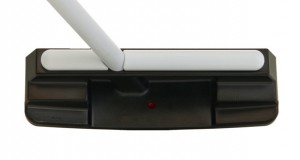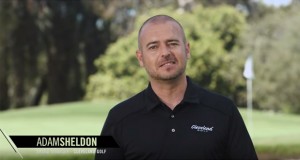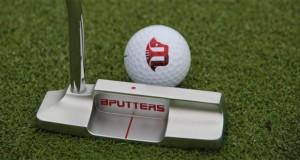Known as “The Putting Doctor,” Glen Coombe has been focused exclusively on putting for nearly two decades. Glen has worked with high-handicap amateurs and past major championship winners. He is a former PGA Apprentice, Non-Member Head Professional and is a member of The Golf Coaches Association of America. Glen is also the Eastern USA representative of Science and Motion Sports of SAM PuttLab fame. At his web site at PuttingDoctor.net, Glen offers a lesson plan called The Money Back Guarantee Putting Lesson, as well as a related clinic called The Money Back Guarantee Putting Experience. PutterZone.com recently caught up with Glen to talk about his teachings. Following is our exclusive interview.
Can you briefly describe the Money Back Guarantee Putting Experience (MBGPE)—what it is that you offer, and what distinguishes it from other instructional approaches?
I focus on fundamentals. You could say my method is focused practice. I’m fond of telling my students I don’t care about the shape of their stroke. Whether it be inside to inside, straight back straight through, or inside down the line, it has to be their natural stroke so it will hold up under pressure.
I’m looking for a stroke in which the face angle is square in relation to the target line for as long as possible through the impact zone. In my teaching we work on both the physical and the subconscious. We’re training our eyes to gauge speed and distance and our muscles to react to what we see versus what we think. My students have a very strong mindset regarding their ability to two-putt any green and know their percentages from every distance. The MBGPE is a disciplined, focused practice routine. In my private lessons we work with the SAM PuttLab and Focus Band, taking full advantage of the latest state-of-the-art technology. Golfers who follow my four-week program lose on average four strokes in handicap. My event days have attendees run through analysis sessions on the SAM PuttLab and the day concludes with my putting clinic.
There are a lot of differing opinions out there on putter fitting factors such as putter length, swingweight and lie angle. What is your point of view on these things as they relate to your teaching?
I find most putter lengths too long for the average golfer. I favor an athletic setup with extended supple arms at address, so the majority of my students tend to end up with shorter putters. The one thing I demonstrate and have great acceptance with is the concept of eyes over the line of the putt. This can’t be accomplished with the average amateur’s longer putter.
Putter swingweight is one of the most counterintuitive issues facing club fitters and golfers today. The prevailing school of though is that for each inch of shaft reduction up to 20 grams of weight needs to be added to the head. I contend that if you lose 4 grams per inch of shaft, which lowers the balance point by one half to three quarters of an inch, adding weight to the head further lowers the balance point again. We are currently working with the SAM and a putting robot on this very issue.
I offer that it is more important to have the appropriate length of putter, regardless of swing-weight. In terms of lie angle I submit that all putters should sole flat on the surface and lie angle is a product of setup and putter length.
What is the Putting Doctor training aid and how does it work?
The PDTA is a pocket sized mirror which I believe to be the most versatile yet simple training aid available. The mirror is opened and placed on the surface, at home on a hard surface floor adjacent to a baseboard. It has adhesive tape on the bottom to adhere to the floor keeping it in place. Set up with the face of the putter applied to the back of the mirror which squares the face to the established target line parallel to the baseboard. Proper stance will have the left eye only appear in the mirror in ball position to train the golfer to have his eyes over the line. Making a stroke over the mirror keeping your eye in place creates a rock steady stroke. The baseboard becomes a reference for stroke shape and will, in short order, train out any tendency for the putter to travel outside the line of the putt. Repeated short duration training ingrains the setup and stroke. I suggest to all my students that they leave the mirror in position for about two weeks of everyday training. The mirror can also be set up in front of the golfer on the target line to check putter lie angle. I joke with my students that once they have completed their training they can also use the PDTA in the shower to assist with shaving.
What is the most common putting flaw you see among students, and do you have any simple tips for correcting it?
At all levels of the game I see players execute putts that never had a chance. By that I refer to putts that finish under the hole either short or long. I train all my students to have reasonable expectations of miss or make, but we focus on a path to the hole which allows the ball to enter at a certain spot relative to clock position and have enough pace to finish within a two foot circle behind the hole. I demonstrate the visualization of the ball path by unrolling a roll of toilet paper for my students, often to a lot of laughs. Again this is a much more reasonable expectation of the path your ball can roll on and still enter the hole. By putting to a high fall in entry point, but with appropriate pace, we open the door to more birdies, and should we miss we can be very confident in our ability to make every two foot putt.
As far as a simple tip, each and every golfer whom I work with remembers the magic words and they generally smile when repeating, “Never leave a putt short.”
Thank you, Glen!
 PutterZone – Best Putter Reviews
PutterZone – Best Putter Reviews



